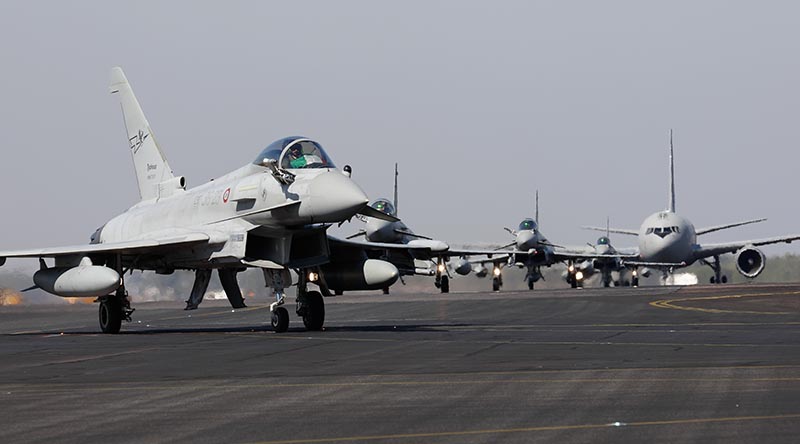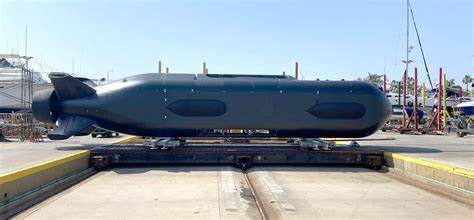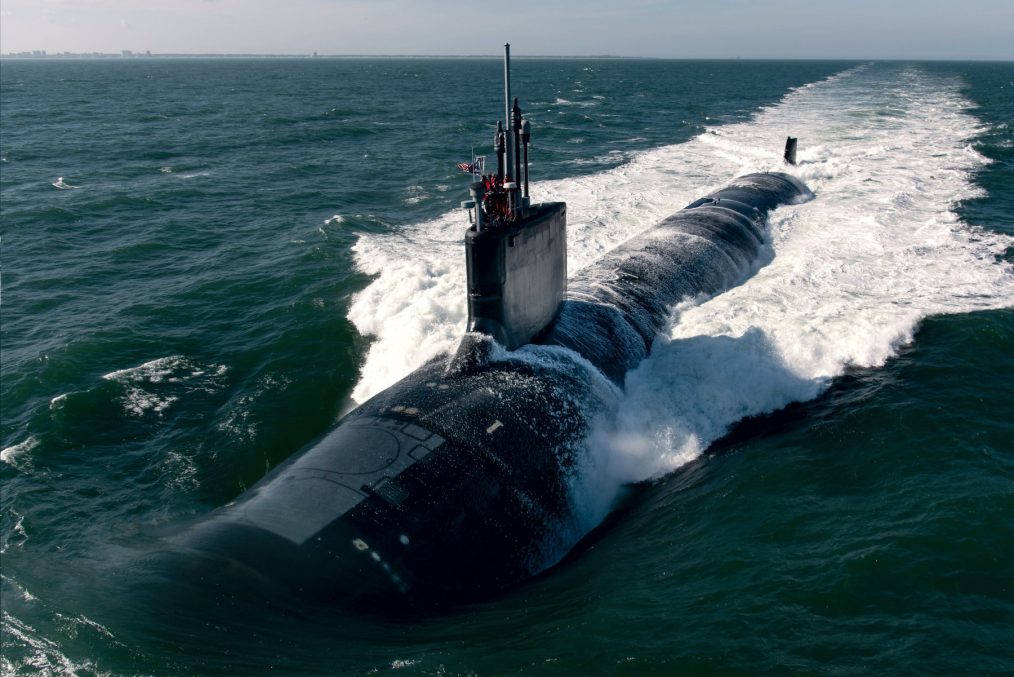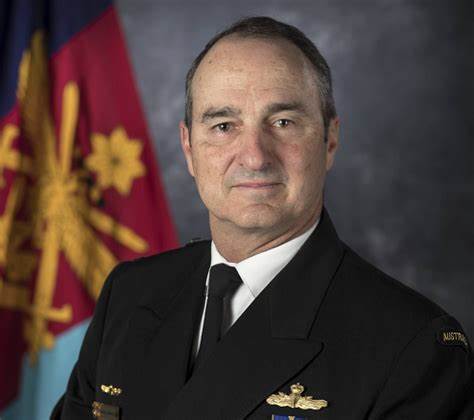ED: I have not reprinted the pictures in this article as they are all covered by copyright.
The truth behind the ‘spitting myth’ that divided Vietnam veterans and anti-war activists
MARK DAPIN
18 hours ago
The Weekend Australian Magazine
59 Comments
Australian Army troops march during a parade for returned Vietnam War soldiers in King William Street, Adelaide in 1969. Photo: Unidentified photographer
Everybody knows that Vietnam veterans are desperate, damaged men, haunted by memories of wartime atrocities and demonstrations against their homecoming at Sydney Airport, where they were spat upon by women and branded “baby killers”. Like many things that everybody knows, this is not true.
I first became interested in military mythology while writing The Nashos’ War, a history of the national service scheme during the Vietnam era. I had read about attacks on veterans by protesters and I wondered how they might have been organised. The story that interested me most of all – because it was the most dramatic and violent, and would have required the highest level of planning and commitment – was published first in a collection of veterans’ writings to mark the National Reunion and Welcome Home Parade in 1987, and more widely showcased in Paul Ham’s bestselling Vietnam: The Australian War in 2007. The account is credited to “Mike” from Perth, a national serviceman who served in the Royal Australian Artillery and flew home, relieved, in January 1970.
“At Mascot [airport], the relief turned to anger,” wrote Mike. “We were pelted with tomatoes and spat on. But we got our satisfaction afterward: 150 toey, angry lads from Vietnam versus 400 demonstrators – they didn’t stand a chance. The cops were very good about it. They seemed to be otherwise occupied for a while. It’s impossible to describe what it feels like to have been away at war for your country and come home to that kind of treatment. It’s something you never forget. Feeling as I do now about the whole thing, I guess I could have been on the opposite side of the fence. But to be spat on and treated like shit, that’s something else.”
As well as never forgetting this incident, Mike never remembered it – because it did not happen. Mike’s essay came out of a veterans’ creative-writing class, whose participants were invited to create either fiction or memoir. Mike’s story is clearly fiction.
Australian soldiers parade past St Mary’s Cathedral in Sydney.
A riot involving 550 people would have been one of the worst incidences of political violence in post-war Australian history, and the only time a large number of returned soldiers ever fought with demonstrators – at the country’s major international airport, no less. Mike’s story received no coverage in any newspaper, and nor did any story remotely like it. It is not mentioned in any history or memoir of the Left. There is no trace of the organisation behind the demonstration, the logistics of which would have been fantastically difficult, given that the flight arrived last thing at night in the presence of military police. No other veteran has ever claimed to have been involved. The Qantas flight crews who manned the returning aircraft do not remember the battle. The official historian of Sydney Airport has never heard of it. There is no record of any participant having been arrested or injured.
In a few short lines, Mike’s story encapsulates the majority of popular untruths about the anti-war movement and presents their sum as a cautionary tale. We read that returned men were pelted with food (they were not, but certain anti-war demonstrators were); that they were spat on (they were not, but certain anti-war demonstrators were); that there were demonstrations against returning soldiers at airports (there were not, ever, anywhere in the world); that the anti-war movement in Sydney had the capacity to secretly mobilise 400 demonstrators last thing at night to confront troops in a security area (it never tried); that demonstrators blamed the troops for the war (they did not); and that returned men took revenge upon demonstrators by beating them up in a massive brawl (they did not, although soldiers who had not yet been to Vietnam once attacked a peaceful protest in Adelaide).
What lies beneath Mike’s unreliable narrative is the idea that the anti-war movement was much larger, more militant and more logistically capable than contemporary reports suggest, and that its target was returned men.
His story also addresses the central problem with the spitting myth – that spat-upon soldiers would have been likely to batter their spitters into cracks in the ground: in this revenge fantasy, they do just that.
This picture was taken soon after the 6th Battalion of The Royal Australian Regiment was involved in Operation Bribie in South Vietnam in February 1967. Photo: Jan Chisholm
The foundation myths of victimised Vietnam veterans in Australia were born, like so many other myths, out of Hollywood movies. The pivotal role of two particular films in helping to form the imagined memory of US veterans was first identified by the sociologist and Vietnam veteran Jerry Lembcke. When Lembcke returned from Vietnam, he joined Vietnam Veterans Against the War, an organisation probably best known for an action in April 1971, when it mustered 800 veterans to throw their medals onto the steps of the Capitol building in Washington DC. Among the apparent medal throwers was future politician John Kerry, who later claimed to have only tossed his ribbons.
Veterans began to join movements against the Vietnam War. Credit: Denver Post via Getty Images
Members of Vietnam Veterans Against the War Al Hubbard, a former Air Force Captain, and John Kerry a former Navy Lieutenant appear on Meet the Press in 1971.
In Lembcke’s book, The Spitting Image: Myth, Memory and the Legacy of Vietnam, he traces the idea that Vietnam veterans were spat upon back to the slurring invective of the fictitious John Rambo, played by Sylvester Stallone in the 1982 movie First Blood; and he ascribes the notion of airport demonstrations against returning soldiers to the 1978 Jane Fonda movie Coming Home. In a later book, Lembcke argued that Hollywood movies “made Vietnam veterans into political props for slandering the anti-war movement”, and that the diagnosis of PTSD was formulated to pathologise dissident veterans. (Look at those long-haired soldiers throwing away their medals! They must be mad!)
In Australia, there was no real movement of anti-war Vietnam veterans. While activists in the US attended demonstrations in military uniform, some Australian veterans have complained that they could not wear their uniforms in the streets for fear of being attacked by protesters, often women. And this did happen, but only once, in June 1966, when 21-year-old Nadine Jensen, a typist from Campbelltown in NSW, doused herself in red paint and kerosene and ran at the leaders of a homecoming march for 1RAR in Sydney, smearing two officers with ersatz blood. An estimated 300,000 Sydneysiders had turned out to cheer on the battalion, and only Jensen and a handful of banner-wavers in the crowd protested what was at the time a very popular war. Jensen, who belonged to no political party and was acting alone, was thought to be insignificant, if not insane. “My action was not so much against the soldiers but against authority itself,” she told a court. “My action may have been wrong in that it should have been protesting against the Australian attitude of complacency.” She was fined £6, then disappeared from history.
Parades for Australian Army soldiers who fought in the Vietnam War. Photo: Australian Army
Although there was never another photographed demonstration at any one of the next 15 welcome-home parades, nor one single verified account of veterans being accosted by protesters during the war itself, Jensen’s actions later became seen as representative of the anti-war movement. According to Gary McKay, a decorated veteran who has written a dizzying number of books on Australia’s Vietnam war, “The wearing of military uniform in Canberra was actually stopped for a long period of time when it was felt that the presence of uniforms in public would invite violence or embarrassing demonstrations against service personnel.”
McKay is mistaken. As my doctoral supervisor at UNSW@ADFA, the late Professor Jeffrey Grey, wrote in 1991, it was not felt that the uniforms might “incite violence”; rather, officers were encouraged to come to work in suits since they were not permitted to wear uniform outside an army base in a social or commercial setting, and they might want to stop off for a drink on the way home, for example. Jeff had no particular time for the antiwar movement. His father, Major General Ronald Grey, had been Commanding Officer of the Seventh Battalion Royal Australian Regiment (7RAR) in Vietnam.
As for the idea that veterans might be spat upon, Lembcke ascribes it to a closing scene of First Blood, when former Green Beret John Rambo, holed up after his spree of justified vengeful violence, is cornered by his former commanding officer Colonel Troutman, who tells him, “It’s over, Johnny. It’s over!”
“Nothing is over!” replies Rambo. After the war, he says, “I came back to the world and I see all those maggots at the airport. Protesting me. Spitting. Calling me baby killer, and all kinds of vile crap. Who are they to protest me, huh?”
The last Australian troops came home from Vietnam in 1973. The first Rambo movie, First Blood, was released in 1982. There was not one single reported, recorded or otherwise publicly aired comment or complaint about an Australian veteran being spat upon until 1982. Where did the fictional character Rambo get the idea that there were demonstrations against Vietnam veterans at airports? None were ever reported in the US until the movie Coming Home, in which Bruce Dern plays a paraplegic veteran coming home (in this case) from the airport with his wife, played by Jane Fonda. “Where’s all the demonstrators?” he asks. “An asshole on the plane told us there was going be a bunch of flowerheads out here.”
“Well, there are some kids out there,” says his wife, “but they can’t come on the base.” Meanwhile, a small group of anti-war protesters circle the gate, chanting, “One, two, three, four, we don’t want your rotten war.”
American actors Jane Fonda (on the ground) and Jon Voight (in a wheelchair) starred in war film Coming Home. Photo: Steve Schapiro via Getty Images
There were no reports of demonstrations at Australian airports until 1982, either, four years after the release of Coming Home. Just to make myself clear – because I am sometimes thought to be using the wrong words by people who do not make much of an effort to choose their own – I am not saying that no Vietnam veteran today claims to have been spat on or demonstrated against at any airport during the war, because they do. I am saying that there is no record of these allegations being made in Australia in newspapers, in broadcasts, in letters, in diaries, in airline records, in Qantas records or in police records at any time between the beginning of Australia’s commitment in 1964 until the local release of First Blood in 1982. Then the spit gates opened.
Actor Sylvester Stallone as John Rambo in First Blood. Photo: CBS via Getty
The spitting stories multiplied around the period of the National Reunion and Welcome Home Parade in October 1987, when about 22,000 men marched through Sydney to the respect and applause of a crowd estimated at 100,000-110,000. History had already been turned on its head in the reporting of the 1987 parade. According to a Canberra Times correspondent, “Fourteen years after the last Australian soldier returned from Vietnam, the Australian community finally gave veterans of the war the welcome home they had been waiting for.” It was as if there had been no previous parades or, if there had, they had been attended largely by protesters. In fact, a total of about 11,000 soldiers had marched in the 16 battalion welcome-home parades during the war years, and the turnout at the 1987 reunion was only a little more than one-third of the size of the crowd that had supported the famous 1RAR parade in 1966 – and only about one-fifth of the half a million people who had cheered for 7RAR in Sydney in 1968.
A larger mythologising role may have been played by the popular Australian TV miniseries Sword of Honour, which first aired on Channel Seven in October 1986, one year before the National Reunion and Welcome Home Parade. The second episode opens with angry Duntroon graduate Tony Lawrence marching proudly in his battalion’s welcome home parade in 1967, applauded by a small crowd of respectable spectators and harangued by what appears to be an equal number of anti-war protesters. A nervous and deranged-looking man slips out of the crowd and hurls a bucket of viscous red liquid, which splatters the face of Lawrence, who falters but marches on as police brawl with the demonstrators.
Great Australian war myths: a selection
Myth: Gallipoli was essentially a battle between Anzacs and Turks. Fact: There were far more British troops (27,500) than Anzacs (18,100) and almost as many French (16,800). And the French suffered even more deaths (8000 as against 7800)
Myth: John Simpson, the great Australian soldier, and his Donkey. Fact: Simpson was not Australian, rather he was a British merchant sailor who jumped ship in Australia in 1910. He joined the AIF for a free trip home.
Myth: Changi was a death factory for Australian POWs. Fact: There were 850 men (fewer than one per cent of those captured in WW2) who died in Changi, the running of which was left largely to the Allies.
Myth: the bridge over the River Kwai. Fact: There was no such bridge. One in Thailand is named for the film – but only to please tourists.
Peter Yule, author of The Long Shadow: Australia’s Vietnam Veterans Since the War, has written, “For many Vietnam veterans, the rejection of their service has played as great a role as the trauma of war in their subsequent mental health struggles.” And today, widespread blood-throwing, spitting and airport demonstrations are popularly believed to have occurred. But these incidents are not history, because they did not happen. If the incidents generally held to express the rejection were not real, but the perception that they were real was real, and if this perception has contributed to veterans’ PTSD, then the responsibility for that trauma must surely fall upon those who have propagated the myths that veterans were spat upon and so on. But even Yule, who was tasked with giving a voice to the veterans, discounted the airport-protest stories. So, while I was writing Lest, I laboured under the pleasant and highly motivating delusion that I had at least put to bed the myth of arrivals-hall demonstrations. But then came Fitz.
In the lead-up to the commemoration of the 50th anniversary of the end of Australia’s commitment to Vietnam, the journalist and “storian” Peter FitzSimons interviewed an SAS veteran who served in Vietnam for nine months in 1971, in a question-and-answer session presented as an opinion piece. FitzSimons asked the veteran about the anti-war protests before he left, and the veteran claimed that he had read in the paper of a “big demonstration” about to happen in Sydney, so he and a few mates made the journey into town: “We turned up in uniform, so it was red-rag-to-a-bull stuff, and they were yelling at us in Martin Place and Angel Place. We deliberately placed ourselves in front of them, I guess, to provoke them. And we got into a bit of a rumble, a bit of biff, and the police were there and they broke it up.” There is no report of an incident anything like this occurring in Sydney in 1970, 1971 or any other time. And it would have been front-page news if the SAS – the SAS! – had blocked and attacked a street march in Martin Place: not only in the middle of the city but in front of the police.
Peter FitzSimons who recently said Michelle Obama would make a “great candidate” in the US presidential race. Photos: Channel 9, Getty
Later, FitzSimons asked the veteran about the homecoming, and he said he was flown back to Sydney via Darwin on a flight for US troops taking R&R in Australia. His mother and father were waiting for him at the airport, and he kissed his mum. FitzSimons pushed the point: “The story always goes that Vietnam vets were often greeted by protesters calling them ‘baby killers’,” he said. “Was that your experience?” “Well, there was a hardcore of protesters at the airport when I got there,” the veteran replied, “shouting abuse, even though it was one o’clock in the morning.”
But Sydney Airport was not even open at one o’clock in the morning. No flights ever arrived at that time. A search of Department of Veterans’ Affairs Nominal Roll of Vietnam Veterans shows that FitzSimons’ veteran arrived home on October 7 1971. No protests were reported at Sydney Airport on October 6, 7 or 8, or any other date. The steam had gone out of the anti-war movement as well as the war by then, and there is no conceivable reason why peace protesters should demonstrate against the final withdrawal of troops, or why the press would not report on their bizarre and eccentric behaviour if they did. And even if protesters had chosen to turn up – for the first and only time – they would not have had access to the schedule for Pan Am’s R&R flights and would not have known there would be troops in the airport. Which was closed.
“Some of those protesters at the airport and at Angel Place, all those years ago, are likely reading this,” said FitzSimons to his interviewee. “What do you say to them?” This is one of the stranger questions in journalistic history: asking a third party to address people who do not exist about something that did not happen. “Well, we live in a democracy and you’re allowed to demonstrate,” said the veteran to nobody, “but I think you had it wrong. You don’t demonstrate and throw abuse at the soldiers or the servicemen. You throw abuse and demonstrate against the government.”
Mark Dapin, journalist, historian and author of Lest. Photo: Supplied
By the 1960s, veterans of the Second World War could be ridiculed by the young as old, drunk and out of touch. Fifteen years after 1945, playwright Alan Seymour was able to portray them as pathetic caricatures in his drama The One Day of the Year, about which much has been made by historians. But Vietnam veterans have experienced this process backwards. There is no doubt that in the years after the war they were mocked and ignored by some people, and thought of as gullible and culpable by others. But by the Sydney welcome-home march in 1987, 15 years after Australia’s withdrawal from Vietnam, the veterans were widely accepted as misunderstood, brave, honest men. This is a tribute to the strength of the narrative they have collectively evolved. They have become a victim group: their claims need not be verified, their truth should not be questioned.
And this is a tragedy, because myths exist in part to give flesh to feelings – and the feelings of persecution are real, albeit heightened by being validated by folklorists, mythologists and journalists. Many veterans feel that the antiwar demonstrations were directed against them. Some returned men feel that their service was spat upon. When they say they had no welcome home, they mean they did not feel welcome at home. They are not lying. But we cannot accept their truth as history.
Lest: Australian War Myths by Mark Dapin, Australian War Myths.
Lest: Australian War Myths by Mark Dapin is out now through Scribner Australia ($34.99).










